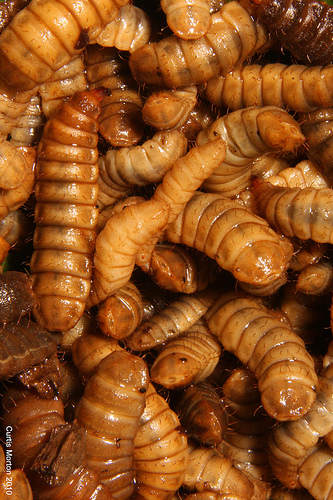Black Soldier Fly: Difference between revisions
(multiple little additions) |
mNo edit summary |
||
| Line 21: | Line 21: | ||
[[Category:Food and Agriculture]] | [[Category:Food and Agriculture]] | ||
[[Category: | [[Category:Biofuel]] | ||
Revision as of 16:55, 21 January 2011
Parts of this text were taken an article by Dr. Paul Olivier - please read the original here.
Larvae of the black soldier fly (BSF), Hermetia illucens, can be used for the bioconversion of many kinds of organic waste, including putrescent waste such as meat and dairy products. BSF are not associated in any way with the transmission of disease. They do not bite, bother or pester humans in any way. In fact, they send out a (pheromonal?) signal to house flies: go away!
BSF bioconversion units are called biopods. A nominal 2-foot diameter biopod, weighing only 14 lbs (6.4 kg), can process over a metric ton of putrescent waste per year. A nominal 4-foot diameter biopod, weighing about 40 lbs (18 kg), can process well over five metric tons of putrescent waste per year. Note that BSF larvae are totally self-harvesting. They abandon the waste only when they have reached their final mature prepupal stage, and they crawl out of the waste and into a collection bucket without any mechanical or human intervention.
Applications and Product Ecology
- BSF larvae can be fed to chickens or fish, and therefore can become an important part of any integrated food and waste management system.
- Extraction of oils from BSFs has been proposed for making diesel-like biofuels and a protein-rich feed additive
- Whatever is left after the BSFs are done eating can be eaten by worms (vermicomposting), dramatically reducing the weight and volume of the compost

